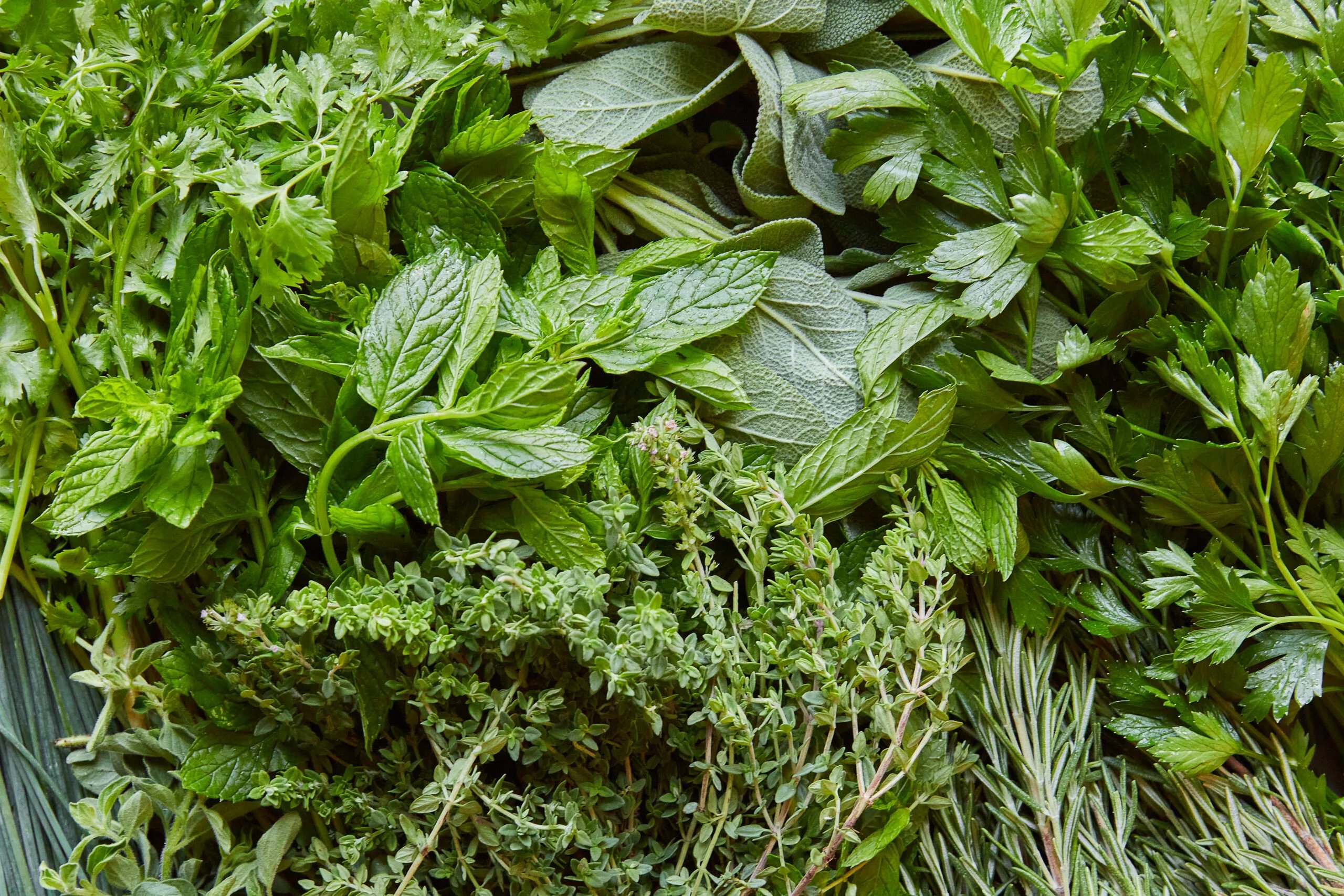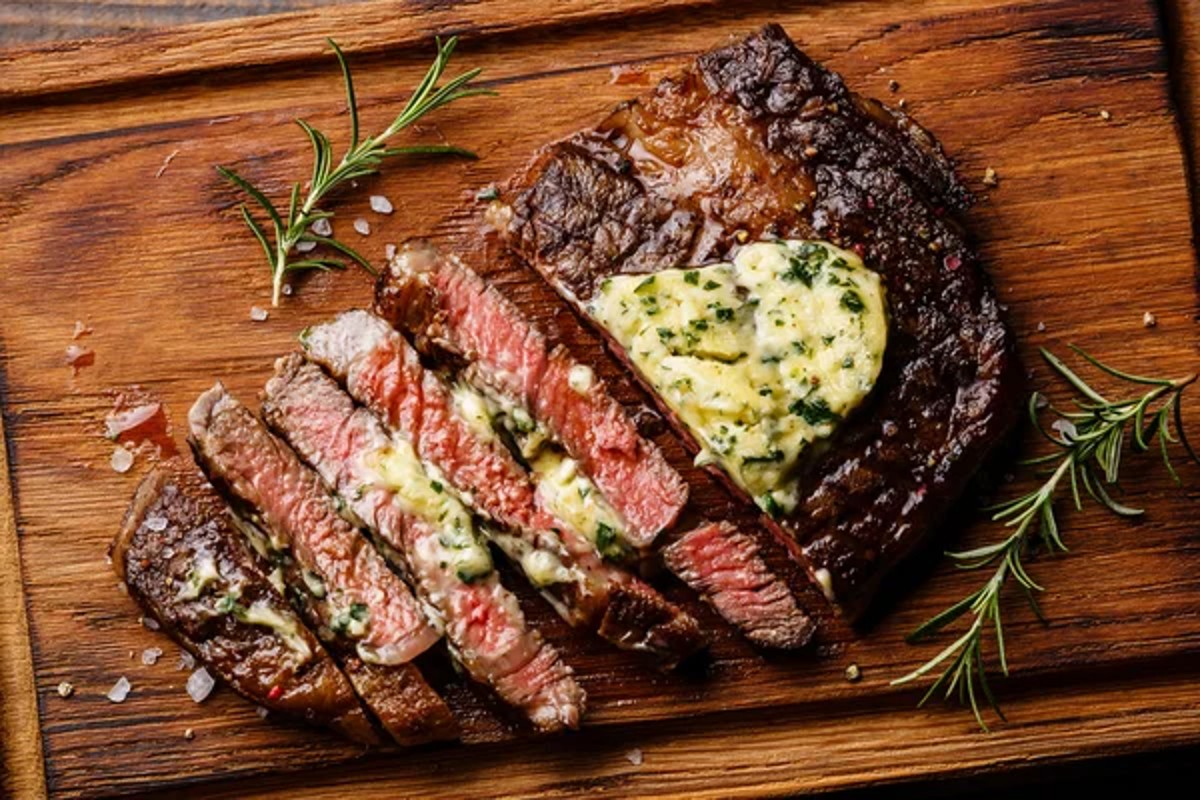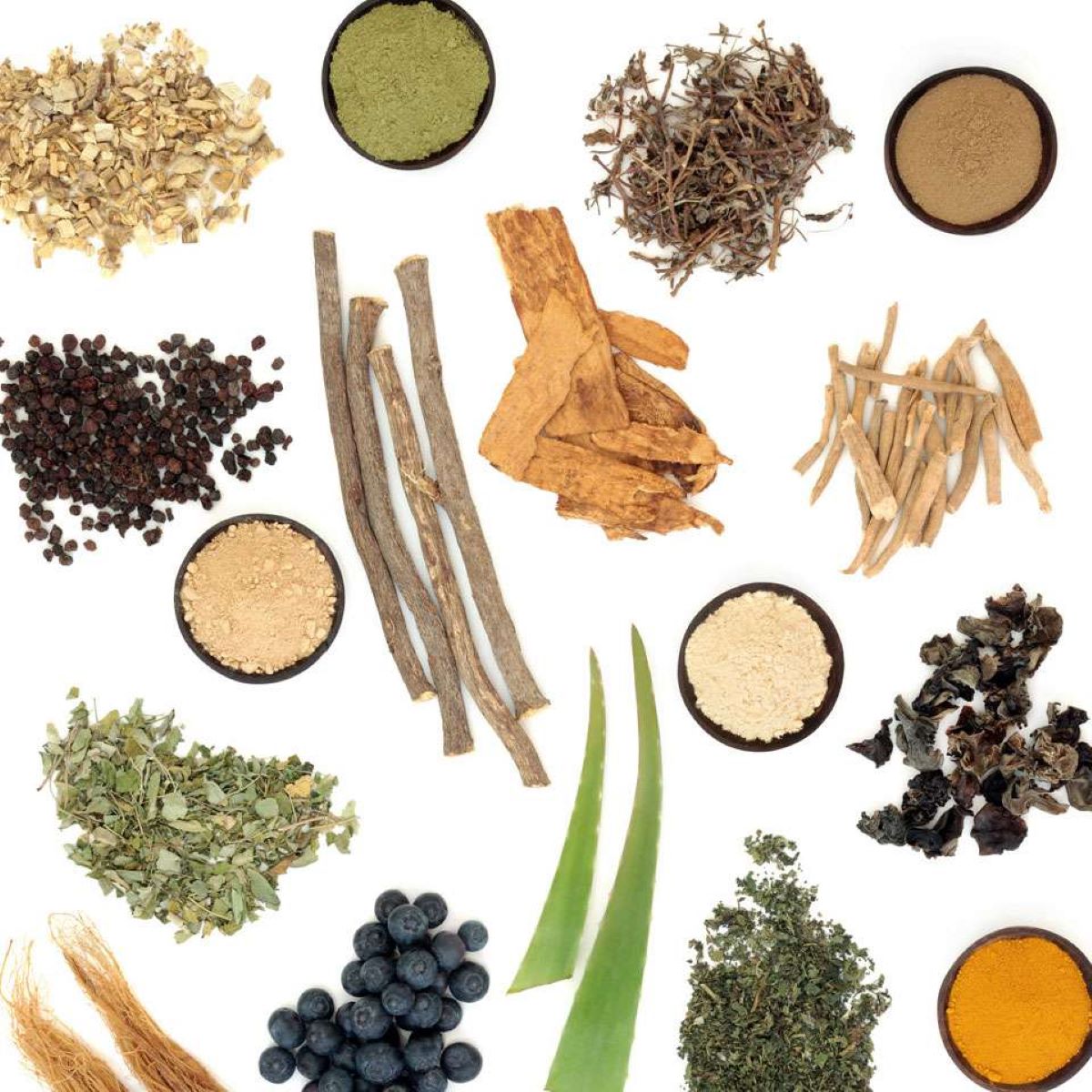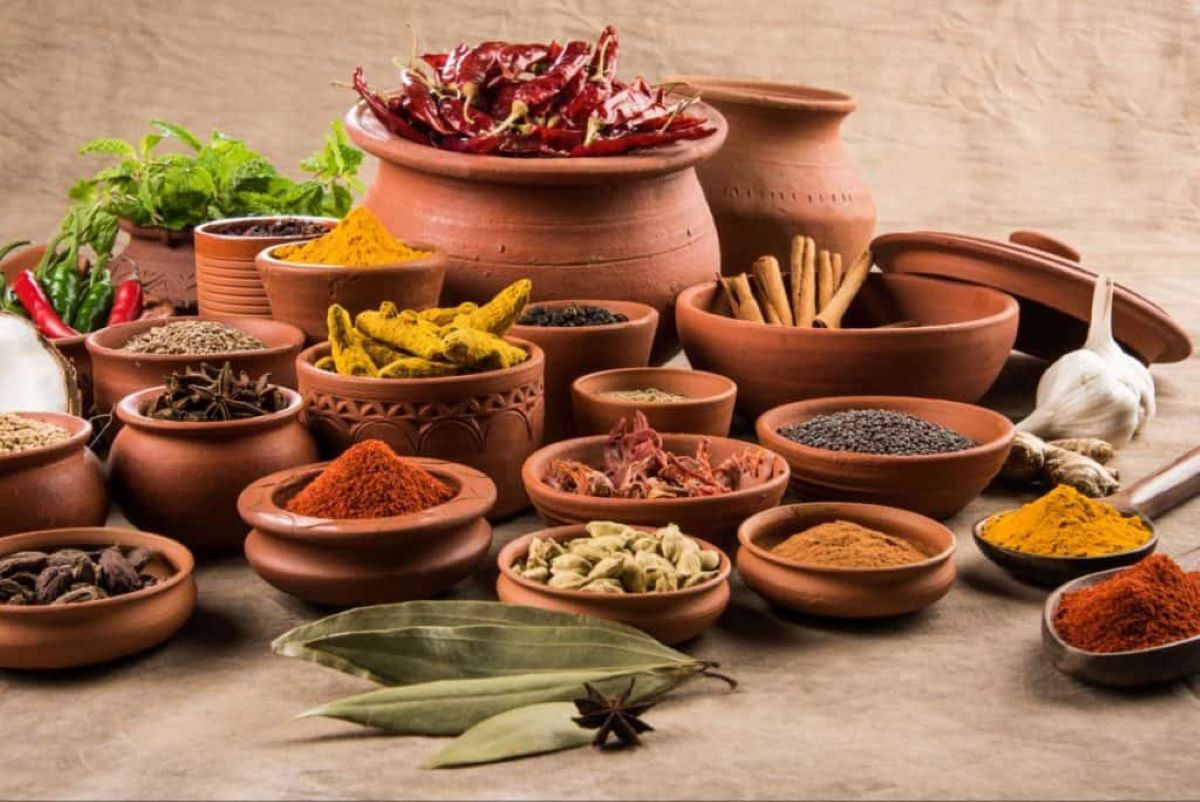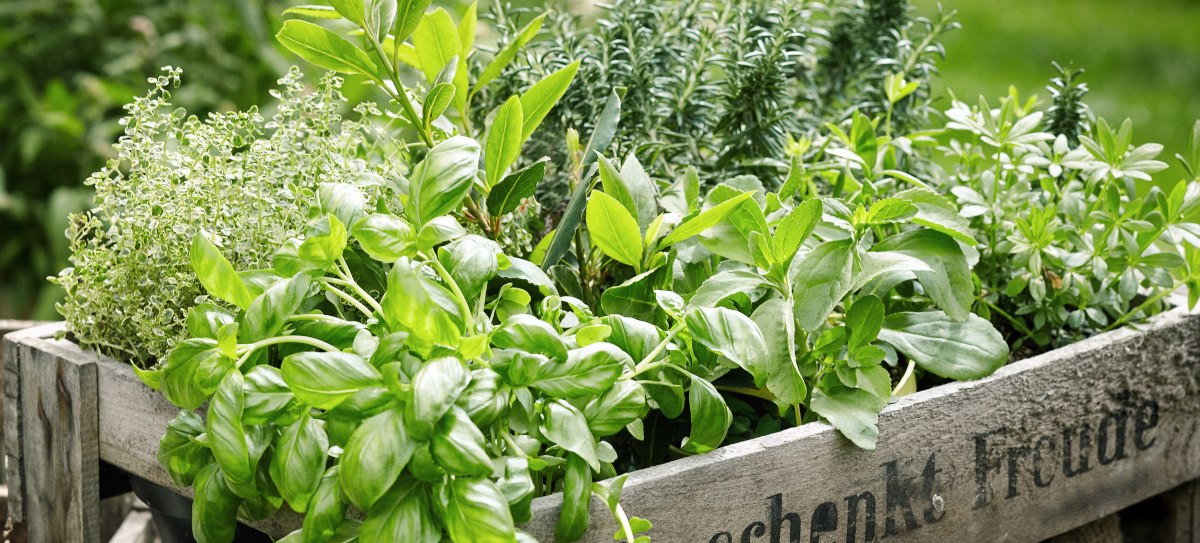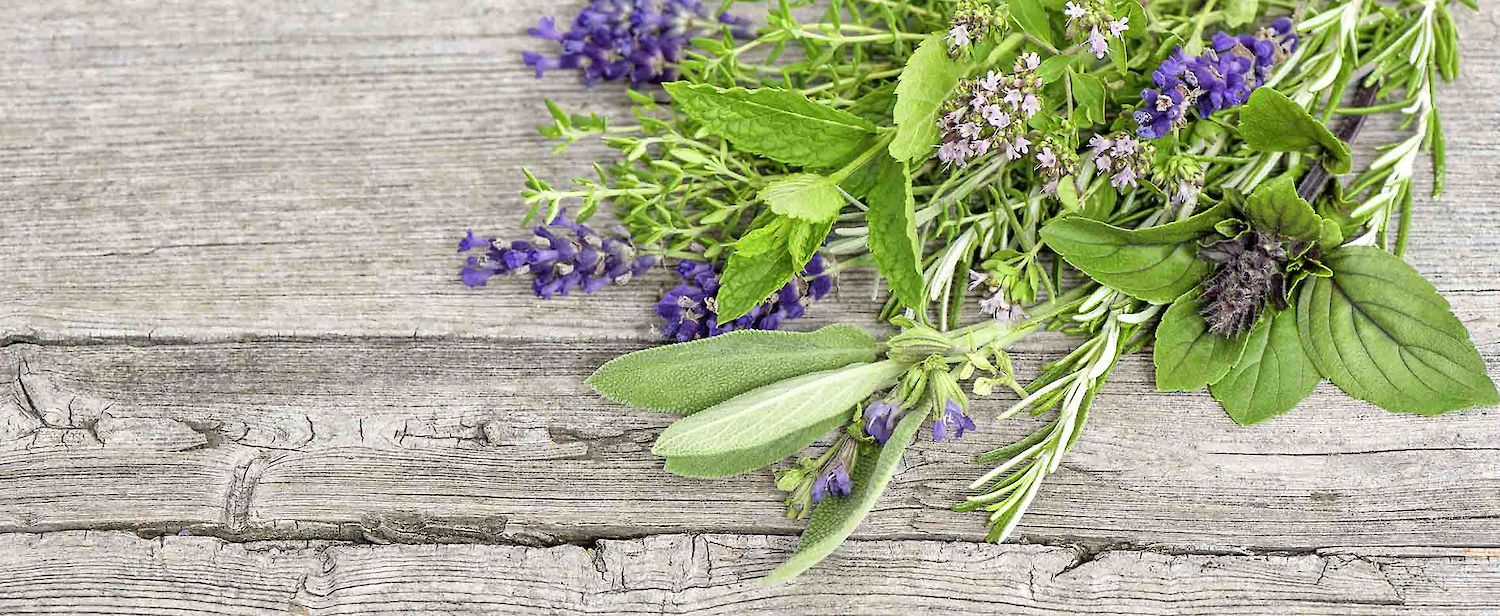Home>Gardening News and Trends>Gardening Trends>What Are Herbs de Provence?
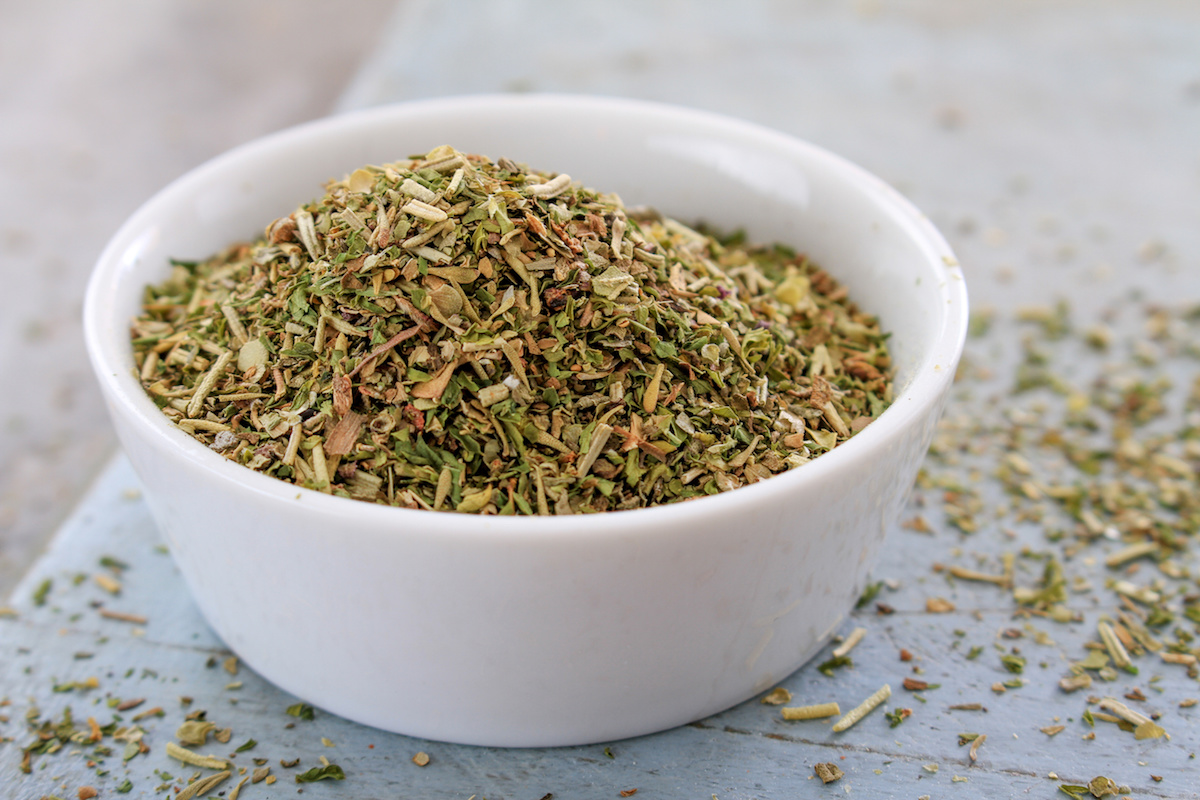

Gardening Trends
What Are Herbs de Provence?
Modified: January 22, 2024
Discover the latest gardening trends with a guide to Herbs De Province. Learn how to cultivate and use these aromatic herbs to add flavor and fragrance to your cooking and gardening endeavors.
(Many of the links in this article redirect to a specific reviewed product. Your purchase of these products through affiliate links helps to generate commission for Chicagolandgardening.com, at no extra cost. Learn more)
Table of Contents
- Introduction
- Brief History of Herbs de Provence
- Ingredients and Traditional Herbs Used
- Popular Uses and Culinary Applications
- DIY Herbs de Provence Recipe
- Variations and Regional Differences
- Health Benefits and Medicinal Uses
- Culinary Tips for Using Herbs de Provence
- Where to Find and Buy Herbs de Provence
- Conclusion
Introduction
Welcome to the world of Herbs de Provence, a delightful blend of aromatic herbs that captures the essence of the Provence region in France. Known for its picturesque landscapes and abundance of fragrant herbs, Provence has long been revered for its culinary traditions and natural beauty.
Derived from the French word “Herbes de Provence,” this popular herb blend brings together a harmonious combination of flavorful herbs that have been used for centuries in Mediterranean cuisine. The unique blend adds depth, complexity, and a touch of Provencal charm to a wide range of dishes.
By incorporating Herbs de Provence into your cooking, you can elevate your culinary creations to new heights, infusing them with the flavors and aromas of the sun-drenched countryside. Whether you are a seasoned cook or a novice in the kitchen, the versatile nature of Herbs de Provence allows you to experiment and create delicious dishes that will transport you to the idyllic landscapes of Southern France.
In this article, we will explore the rich history of Herbs de Provence, discover its traditional ingredients, explore its culinary applications, delve into its health benefits, and share some tips for using this enchanting herb blend in your everyday cooking.
Brief History of Herbs de Provence
The origins of Herbs de Provence can be traced back to the charming Provence region in the southeast of France. The region is renowned for its rich culinary heritage and is often referred to as the “garden of France.” Here, a variety of aromatic herbs thrives in the Mediterranean climate, creating a paradise for herb enthusiasts and gastronomy lovers alike.
The use of herbs in Provencal cuisine has a long history, dating back to the Roman era. With its favorable climate and fertile soil, Provence became a hub for herb cultivation and trade. The bustling markets and traditional herbalists showcased an array of fragrant herbs grown in the region.
Herbs de Provence as a specific blend became popular in the 1970s when it was introduced to the commercial market. Up until that point, locals in Provence would often create their own unique herb mixtures using the herbs readily available in their surroundings.
The traditional blend typically includes a combination of thyme, rosemary, marjoram, savory, and oregano. These herbs are carefully selected for their aromatic qualities and ability to complement a wide range of dishes.
Over time, other herbs such as basil, lavender, and parsley have also found their way into some variations of the blend, adding even more depth and complexity to the flavor profile.
The popularity of Herbs de Provence quickly spread beyond the borders of France, capturing the attention of chefs and home cooks around the world. Its versatile nature and the ability to enhance the flavors of both savory and sweet dishes make it a valuable addition to any kitchen.
Today, Herbs de Provence has become a staple in many spice racks, sought after for its distinctive aroma and taste. Whether used in classic French recipes or creatively infused into international dishes, this herb blend continues to captivate taste buds and transport people to the enchanting landscapes of Provence.
Ingredients and Traditional Herbs Used
The traditional blend of Herbs de Provence typically consists of a handful of aromatic herbs that are characteristic of the Provence region. While variations may exist, the core herbs used in this blend include:
- Thyme: Known for its earthy and slightly minty flavor, thyme is a key component of Herbs de Provence. It adds a subtle and fragrant note to dishes, imparting a touch of warmth and depth.
- Rosemary: With its distinct pine-like aroma, rosemary brings a delightful Mediterranean flair to the blend. Its woody and slightly bitter taste pairs well with roasted meats and potatoes.
- Marjoram: Also known as sweet marjoram, this herb has a subtle and sweet flavor that adds a delicate touch to the blend. It complements poultry, vegetables, and legumes wonderfully.
- Savory: Savory, with its peppery and slightly pungent taste, contributes a robust and savory character to Herbs de Provence. It pairs well with grilled meats and adds depth to stews and soups.
- Oregano: Oregano brings a hint of spiciness and a robust flavor to the blend. It adds complexity to tomato-based sauces, pizzas, and roasted vegetables.
While these herbs form the foundation of Herbs de Provence, other additional herbs can be included in different variations, depending on personal preferences and regional customs. Some common additions include:
- Basil: Adding a fresh and slightly sweet taste, basil is a popular addition to some blends of Herbs de Provence. It pairs well with tomatoes, salads, and pasta dishes.
- Lavender: Known for its delicate floral aroma, lavender adds a unique and fragrant note to the blend. Its subtle taste enhances both sweet and savory dishes, including baked goods and roasted meats.
- Parsley: Parsley adds freshness and a mild, grassy flavor to the blend. It brings a vibrant green color and complements a variety of dishes, from sauces and dressings to soups and stews.
It’s important to note that the proportions of each herb may vary slightly depending on the recipe or personal preferences. Some blends may also include additional herbs or spices to further enhance the flavor profile.
The combination of these carefully selected herbs creates a balanced and aromatic blend that captures the essence of the Provence region. The result is a versatile herb mixture that can be utilized in countless culinary creations, infusing them with the vibrant flavors of the Mediterranean.
Popular Uses and Culinary Applications
Herbs de Provence is incredibly versatile and can be used in a wide range of culinary applications. Its flavorful blend of herbs adds a delightful depth of flavor and a touch of Provencal charm to various dishes. Here are some popular ways to incorporate Herbs de Provence into your cooking:
- Roasted Meats: One of the classic uses for Herbs de Provence is as a rub for roasted meats. Sprinkle the blend over poultry, lamb, or beef before roasting to infuse the meat with fragrant flavors.
- Grilled Vegetables: Tossing mixed vegetables such as zucchini, bell peppers, and eggplant with Herbs de Provence, olive oil, and salt before grilling adds a delectable seasoning and enhances the natural flavors of the vegetables.
- Sauces and Marinades: Herbs de Provence can be added to tomato-based sauces, marinades, and dressings to bring depth and complexity to the flavor profile. It works especially well in pasta sauces, salad dressings, and marinades for grilled vegetables or meats.
- Baked Goods: The aromatic blend of Herbs de Provence can also be incorporated into baked goods. Try adding a pinch to bread dough, focaccia, or biscuits for a unique and savory twist.
- Seasoning for Soups and Stews: Enhance the flavor of your favorite soups and stews by adding Herbs de Provence during the cooking process. It adds a comforting and aromatic element to hearty dishes.
- Herb Butter or Oil: Infuse melted butter or olive oil with Herbs de Provence and use it as a flavorful drizzle on grilled meats, roasted vegetables, or crusty bread.
- Mediterranean-inspired Salads: Add a sprinkle of Herbs de Provence to Mediterranean-inspired salads such as Greek or Caprese salad for an extra burst of flavor.
The uses for Herbs de Provence are only limited by your creativity in the kitchen. Experiment with different recipes and explore how this versatile blend can elevate your favorite dishes to new heights.
Whether you’re indulging in the bold and savory flavors of roasted meats or adding a savory twist to your baked goods, Herbs de Provence is a delightful addition to any culinary repertoire. Keep a jar of this fragrant blend handy, and let it transport your taste buds to the sun-kissed landscapes of Provence with every bite.
DIY Herbs de Provence Recipe
Creating your own homemade Herbs de Provence blend allows you to personalize the flavors and experiment with different herb combinations. Here is a simple DIY recipe to make your own Herbs de Provence:
Ingredients:
- 2 tablespoons dried thyme
- 2 tablespoons dried rosemary
- 1 tablespoon dried marjoram
- 1 tablespoon dried savory
- 1 tablespoon dried oregano
- 1 teaspoon dried basil (optional)
- 1 teaspoon dried lavender (optional)
- 1 teaspoon dried parsley (optional)
Instructions:
- In a small bowl, combine all the dried herbs and mix well. If using, add the optional basil, lavender, and parsley.
- Crush any larger dried herbs between your fingers to release their flavors and aromas.
- Transfer the blend to an airtight container, such as a jar or spice bottle.
- Store in a cool, dark place, away from direct sunlight, to preserve the flavors and freshness of the herbs.
- Label the container with the name and date of preparation for future reference.
Feel free to adjust the proportions to suit your taste preferences. You can also experiment with including other herbs that you enjoy or that are locally available.
Homemade Herbs de Provence blends make thoughtful gifts for fellow food lovers. Consider packaging the blend in a decorative jar or container and sharing the flavors of Provence with your friends and family.
Remember to take note of the freshness of your herbs. It’s best to use dried herbs that are within their expiration date or freshly dried for optimal flavors. Additionally, consider sourcing organic and high-quality herbs for the best results.
Now that you have your own homemade Herbs de Provence blend, you are ready to explore the delicious flavors and aromatic qualities of Provencal cuisine. From roasted meats to grilled vegetables and beyond, let your creativity shine as you incorporate this delightful herb blend into your culinary adventures.
Variations and Regional Differences
While the traditional blend of Herbs de Provence consists of thyme, rosemary, marjoram, savory, and oregano, variations of this herb blend can be found across different regions and cuisines. Each variation brings its own unique twist to the flavors and aromas of Herbs de Provence. Here are a few notable variations and regional differences:
- Provence: In the heartland of Herbs de Provence, variations may include additional herbs such as sage, fennel, and tarragon. These additions lend extra complexity and herbal notes to the blend, further embodying the flavors of the French countryside.
- Mediterranean: In Mediterranean countries like Italy and Greece, variations may include additional herbs such as basil and parsley. These additions bring a fresh and vibrant twist to the blend, complementing the Mediterranean flavors and ingredients commonly used in these cuisines.
- North America: In North America, variations of Herbs de Provence may include locally available herbs that mimic the flavors of the traditional blend. Dill, bay leaves, and sage might be incorporated to create an herb blend that is familiar to the local palate.
- International Fusion: With the rise of global cuisine, chefs and home cooks around the world have been inspired to create their own unique variations of Herbs de Provence. You might find blends infused with spices like paprika, chili flakes, or even exotic herbs like lemongrass and cilantro.
These variations and regional differences allow for endless experimentation and customization, tailored to suit different tastes and the availability of local herbs. Don’t be afraid to get creative and adapt the blend to your own preferences and culinary inspirations.
Regardless of the variations and regional differences, the essence of Herbs de Provence remains intact – to enhance the flavors of dishes and bring a touch of Provencal charm to your cooking. The key is to embrace the spirit of exploration and adapt the blend to suit your personal taste preferences and the culinary traditions of your region.
Next time you come across a unique variation of Herbs de Provence, embrace the opportunity to experience new flavors and appreciate the diverse interpretations of this beloved herb blend.
Health Benefits and Medicinal Uses
Herbs de Provence not only adds delightful flavors to your culinary creations but also offers various health benefits due to the properties of the individual herbs within the blend. Here are some potential health benefits and medicinal uses:
- Antioxidant Power: Many of the herbs in Herbs de Provence, such as rosemary and thyme, are rich in antioxidants. These compounds help protect cells from damage caused by free radicals and may contribute to overall health and well-being.
- Anti-inflammatory Properties: Herbs like thyme and rosemary have demonstrated anti-inflammatory effects, potentially helping to reduce inflammation in the body. Chronic inflammation is linked to various health conditions, so incorporating these herbs into your diet can be beneficial.
- Digestive Aid: Some herbs in Herbs de Provence, such as thyme and savory, have traditionally been used to promote digestion. They may help reduce bloating, gas, and indigestion, aiding in healthy digestion.
- Respiratory Support: Certain herbs within the blend, like thyme, have been used to support respiratory health. Thyme contains compounds that have expectorant and antimicrobial properties, making it beneficial for coughs and respiratory infections.
- Antimicrobial Effects: Several herbs in Herbs de Provence, such as oregano and thyme, possess antimicrobial properties. They contain compounds that can help inhibit the growth of bacteria, fungi, and other harmful microorganisms.
- Stress Relief: The aromas of herbs like lavender and rosemary have been associated with relaxation and stress relief. In aromatherapy, these herbs are often used to promote a sense of calm and well-being.
While Herbs de Provence can offer potential health benefits, it’s important to note that they should not replace professional medical advice or treatment. If you have specific health concerns or conditions, consult with a healthcare professional before using herbs for medicinal purposes.
When incorporating Herbs de Provence into your cooking, remember to use them in moderation as part of a balanced diet. The blend can enhance the flavors of your dishes while potentially providing some health benefits along the way.
Explore the culinary and wellness potential of Herbs de Provence, and embrace the natural goodness that these herbs can bring to your overall health and enjoyment of food.
Culinary Tips for Using Herbs de Provence
Herbs de Provence is a versatile herb blend that can elevate the flavors of countless dishes. To make the most of this culinary gem, here are some helpful tips for using Herbs de Provence in your cooking:
- Seasoning with Balance: Herbs de Provence has a concentrated flavor, so start with a small amount and gradually adjust to personal taste preferences. Remember, a little goes a long way.
- Enhancing Roasted Meats: Rub Herbs de Provence onto roasts, such as chicken, lamb, or beef, before cooking. The blend infuses the meat with delightful flavors as it roasts, creating a delicious and aromatic dish.
- Flavorful Vegetable Medleys: Toss mixed vegetables, like zucchini, bell peppers, and eggplant, with Herbs de Provence, olive oil, and a sprinkle of salt before roasting or grilling. The blend adds a savory dimension to the seasonal produce.
- Elevating Grilled Foods: Sprinkle Herbs de Provence on grilled vegetables, seafood, or tofu for an extra layer of flavor. The herbs beautifully complement the smoky char of grilled foods.
- Seasoning Soups and Stews: Add Herbs de Provence to soups, stews, and sauces during the cooking process. The blend adds depth and complexity to the flavors, transforming a simple dish into something spectacular.
- Infused Oils and Vinegars: Create herb-infused oils or vinegars by steeping Herbs de Provence in olive oil or vinegar. Use the infused oil for dressings, marinades, or drizzling on bread, and the infused vinegar for flavoring salads or enhancing sauces.
- Herb Butter: Blend softened butter with Herbs de Provence to create a flavorful herb butter. Spread it on crusty bread, use it to finish grilled meats, or melt it over steamed vegetables for a burst of herbaceous goodness.
- Aromatic Seasoning for Roasted Vegetables: Toss root vegetables like carrots, potatoes, and turnips with a generous sprinkle of Herbs de Provence, olive oil, salt, and pepper before roasting. The blend adds natural aromas that perfectly complement the caramelized flavors of the vegetables.
- Experiment with Baking: Get creative by adding Herbs de Provence to bread dough, pizza crusts, or even biscuits. The blend adds a unique and savory twist to your baked goods.
Remember, the key to using Herbs de Provence successfully is to be creative and to trust your taste buds. Experiment with different dishes and adapt the blend to suit your personal preferences. Let the enchanting flavors of Herbs de Provence transport you to the sun-drenched landscapes of Provence with every bite.
Where to Find and Buy Herbs de Provence
Herbs de Provence can be readily found in numerous grocery stores, specialty spice shops, and online retailers. Here are some places where you can easily find and buy this delightful herb blend:
- Grocery Stores: Most well-stocked grocery stores carry a variety of herbs and spice blends, including Herbs de Provence. Look for it in the spice aisle, either in small jars or in bulk bins where you can purchase the desired quantity.
- Specialty Spice Shops: Local spice shops or gourmet food stores often have a wider selection of herbs and spice blends, including high-quality Herbs de Provence made from fresh and aromatic ingredients. These stores may offer a range of variations and blends for you to explore.
- Farmers’ Markets: Local farmers’ markets are a fantastic place to find fresh, locally grown herbs. Many farmers offer their own blends of Herbs de Provence, allowing you to support local producers while enjoying the authentic flavors of Provence.
- Online Retailers: Numerous online stores specialize in selling herbs and spices. These retailers often have a wide range of options, including organic and gourmet varieties of Herbs de Provence. Ordering online offers convenience and the ability to explore different brands and variations.
- Make Your Own: If you prefer a hands-on approach, you can also make your own Herbs de Provence blend using individual dried herbs. This allows you to tailor the blend to your taste preferences and ensures the freshness of the ingredients.
When purchasing Herbs de Provence, choose a reputable supplier that guarantees quality and freshness. Look for blends made with high-quality dried herbs that have not lost their aromatic qualities.
It’s also worth considering the organic options available, as they are free from pesticides and may offer a more vibrant flavor. Additionally, check the expiration date or packaging to ensure the herbs are still within their prime.
Whether you choose to purchase Herbs de Provence or make your own blend, having this versatile herb mixture in your pantry allows you to infuse your dishes with the captivating flavors of the Provence region.
Conclusion
Herbs de Provence is a delightful herb blend that captures the essence of the Provence region in France. With its aromatic profile and versatile nature, it has become a staple in kitchens around the world. Incorporating this blend into your culinary adventures allows you to explore the flavors and aromas of the sun-drenched countryside and brings a touch of Provencal charm to your dishes.
In this article, we delved into the history, traditional ingredients, and popular culinary applications of Herbs de Provence. We explored its regional variations, health benefits, and shared some culinary tips for using this enchanting herb blend.
Whether you’re using it to season roasted meats, aromatic vegetables, or to infuse oils and vinegars, the possibilities with Herbs de Provence are truly endless. Let your creativity shine as you incorporate this versatile blend into your cooking.
When it comes to finding and purchasing Herbs de Provence, you have various options, from grocery stores and specialty shops to online retailers and even making your own blend. Choose a reliable source that offers high-quality herbs to ensure the best flavors and aromas.
So, why not embark on a culinary journey to Provence? Let Herbs de Provence transport you to the idyllic landscapes of the region, where sunshine, aromatic herbs, and rich flavors await. Embrace the beauty of this herb blend and savor the joys of cooking with the flavors of Provence in your own home.
